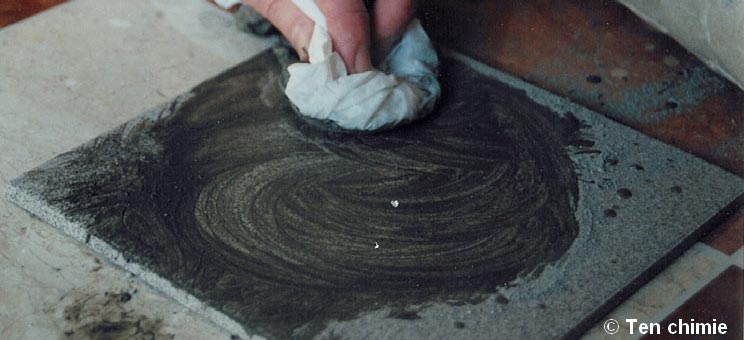The degree of porosity of the floor can be intrinsic ( like terracotta and some other porous natural stone) or related to its wear and poor maintenance habits ( cleaning with acid).
Porous stones are obviously much more sensitive to stains and need to be treated in the appropriate way.
In the first case (naturally porous stone), the floor should be protected with an emulsion or a water and oil repellent. These floors in general can’t be polished to obtain a natural gloss finish.
In the second case (poor maintenance), grinding of the damaged surface and polishing and crystallization allow to return to the original material and facilitate maintenance after the treatment.
It is quite easy to evaluate the level of porosity of a floor through several tests. The floor should be lightly sanded (sand paper #400) to ensure that the protection layer is removed.
- Test 1 : Pour a little bit of water on the floor. If the water penetrates, it means the floor is porous.
- Test 2 : Mix some dirt and dust (from a vacuum cleaner bag for example) with a bit of water and spread onto to floor. After drying, clean with a white cloth and water. When the dirt disappears completely, the floor is not porous. Otherwise it will be necessary to grind the floor and to regain the non-porous layer and to protect the floor with an emulsion.
- Test 3 : Evaluate the micro-porosity (structural) with a pencil test. Draw a fine line on the tile. If the line disappears with a cloth and water, the floor is not microporous (easy maintenance). If not, it will be necessary to provide an adequate treatment.

The degree of porosity of the floor can be intrinsic ( like terracotta and some other porous natural stone) or related to its wear and bad maintenance habits ( cleaning with acid).
